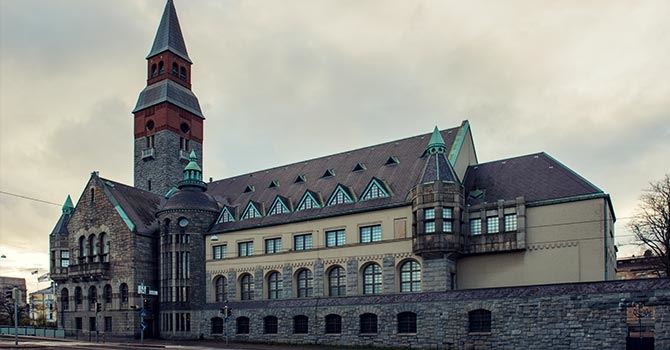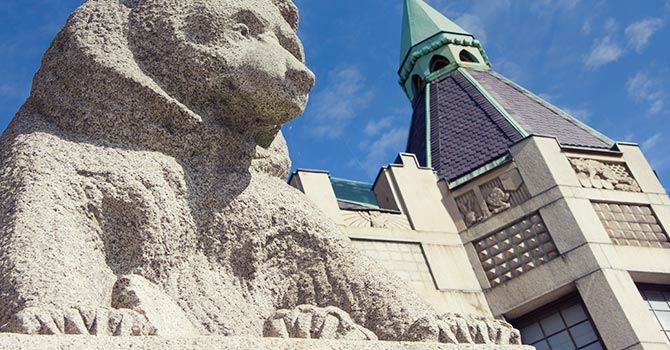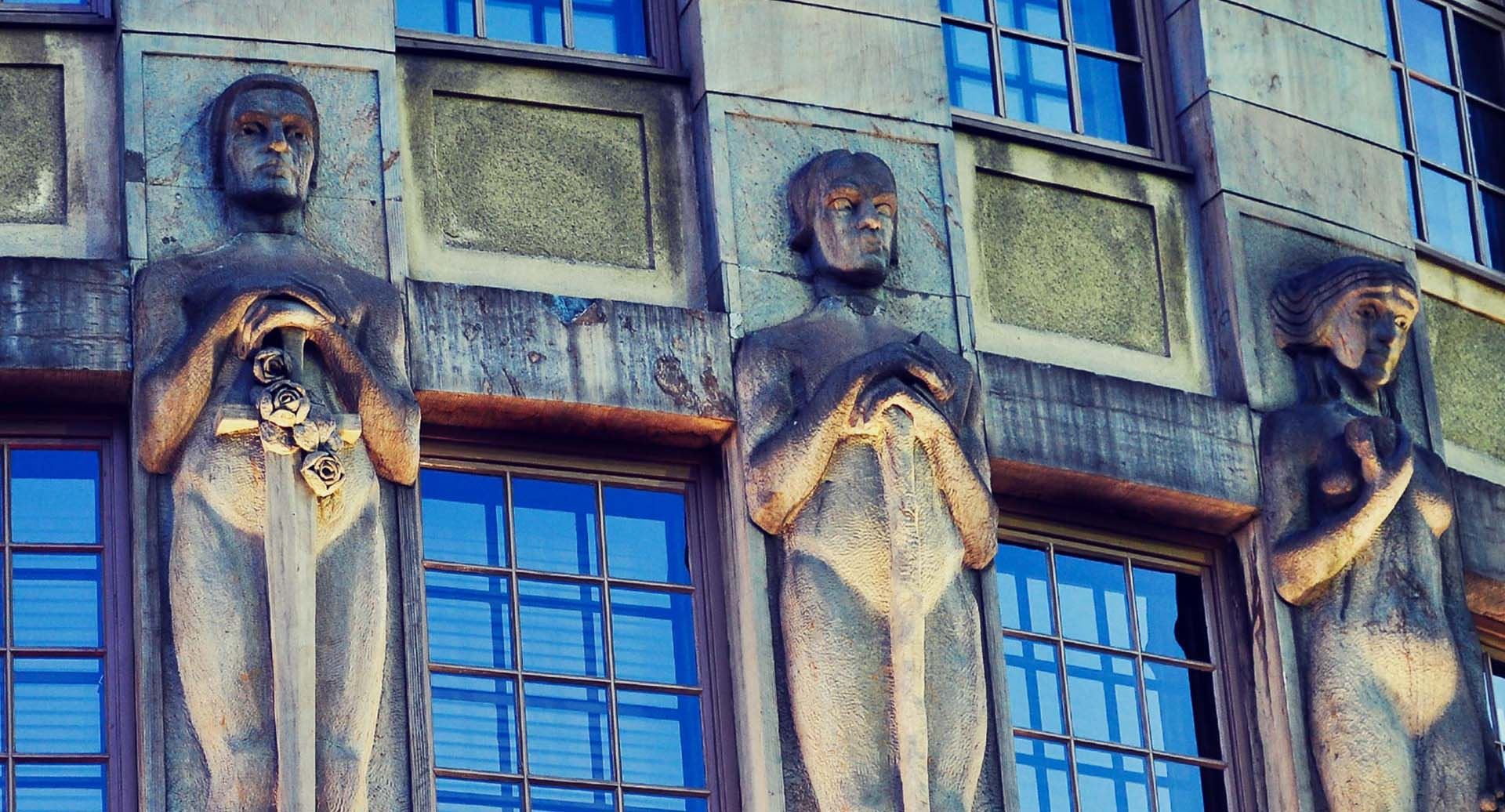Helsinki, City of Stone and Poetry
Around 1900, Finnish National Romanticism was in full swing and looking for ways to reaffirm a national identity. The work of this cultural movement was reflected in urban landscapes through the construction of many buildings inspired by a style known as Art Nouveau in France and Jugendstil in Germany (a term which was also adopted by the Finns). This was a new approach to visual arts, design and architecture with an emphasis in curves, decorative arts and creative use of urban lighting.
Along with other modern styles, Helsinki is a true open air museum for Jugendstil, with several buildings dating from the late 19th Century and early 20th Century. These works share some common features: the buildings’ and decorations’ large scales, the use of granite stones and related materials, and the appropriation of Finnish folklore for what was then the “new architecture”. In many of these buildings there are clear references to the Kalevala, an old epic poem that is the basis of Finnish literature and folklore.
Gargoyles, bears and gnomes
Architecture aficionados will have to start their journey, preferably on foot, and begin in the city’s north where we find the Kallio Church. This grandiose work was built in 1912 and designed by architect Lars Sonck. It features a huge tower, richly decorated interiors and a peculiar granite aesthetic. The church also has very nice acoustics and has a regular program of organ and religious music recitals.
Also north of the city centre is the Pohjola building, belonging to an old local insurance company. Built in 1901 and designed by Eliel Saarinen, this rustic building is fully aligned with the main principles of Jugendstil: the facades covered with gargoyles, grotesque figures and bas-reliefs depicting animals and forests, while the interior’s stairways, glass windows and ornamented rooms evoke Finnish folk traditions.
The “new art” at the heart of Helsinki

Near the centre is the Kruununhaka quarter, whose streets are teeming with more or less discreet buildings that belong to the Art Nouveau historical era. A walk here can also lead us to neighbouring Kaisaniemen where we find the Seurahuone Hotel, designed by Armas Lindgren, and the Finnish National Theatre — built in 1902, it mixes Neo-Gothic stylings with typical early 20th Century decorative elements. The architect in charge was Onni Tarjanne.
Also, you cannot miss the Rautatieasema (Helsinki Central Railway Station).
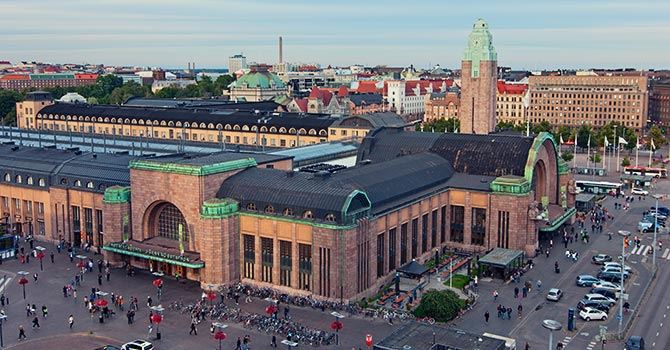
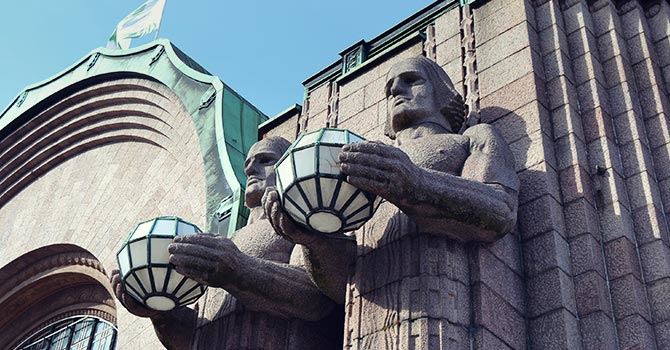
This is the typical approach for later Jugendstil, an example of which can also be found at the Helsinki Stock Market building — built almost at the same time, it is part of that aesthetical movement, but it also presents a more simplified and practical design.
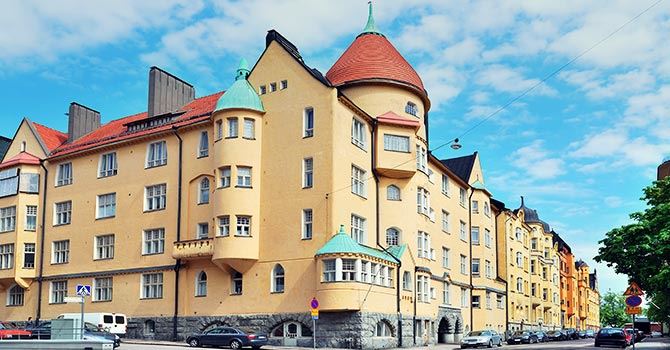
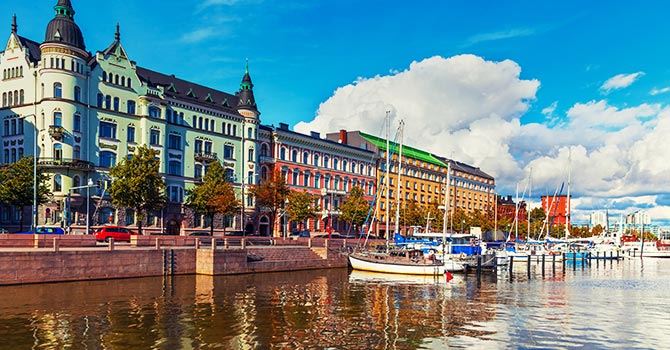
Refresh your mind and body
Near the railway station and the National Theatre we can explore Finnish art at the Finnish National Museum and again observe the influence of Finnish popular traditions: statues of animals guard the entrance and the central hall features frescoes depicting scenes from the Kalevala. These were painted by Akseli Gallen-Kallela.
The building itself was designed by a trio of architects: Armas Lindgren, Herman Gesellius and the ever-present Eliel Saarinen. After your visit, you can head to Eira, a prosperous southern neighbourhood also full of Jugendstil style houses and buildings, the main one being the Eira Hospital, designed by Lars Sonck.
